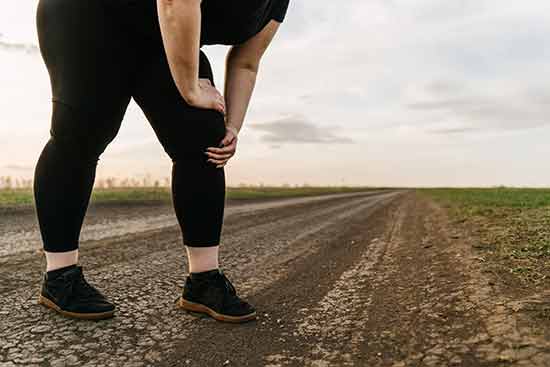 Lipedema mobility problems often occur when lipedema advances to stage 2 and 3. As Lipedema progresses, patients experience a series of symptoms including, discomfort, pain, heaviness and numbness. These symptoms get increasingly worse and begin to affect a person’s mobility and quality of life, causing decreased ability to move as easily, usually affecting the ability to exercise, too. At later stages, it can even put patients in a wheelchair, or possibly make them bedridden. If patients that suffer from mobility problems they are susceptible to a variety of lower limb complications. If left untreated, many of these conditions can become serious or life threatening. Dr. Marcia Byrd is a leading expert in diagnosing and treating lipedema.
Lipedema mobility problems often occur when lipedema advances to stage 2 and 3. As Lipedema progresses, patients experience a series of symptoms including, discomfort, pain, heaviness and numbness. These symptoms get increasingly worse and begin to affect a person’s mobility and quality of life, causing decreased ability to move as easily, usually affecting the ability to exercise, too. At later stages, it can even put patients in a wheelchair, or possibly make them bedridden. If patients that suffer from mobility problems they are susceptible to a variety of lower limb complications. If left untreated, many of these conditions can become serious or life threatening. Dr. Marcia Byrd is a leading expert in diagnosing and treating lipedema.
- Orthostatic Edema: First and foremost, “edema” is caused by an accumulation of excess fluid. When a person sits or stands for long periods of time, excess fluid can accumulate in the lower extremities such as the feet and legs causing swelling. The body generally restores itself to normal levels within 48 hours; however, people that suffer from lipedema have greater difficulty reducing swelling under normal circumstances. Excess fluid buildup in the feet and legs is a classic characteristic of lipedema.
- Stasis Dermatitis: Inflammation of the skin on the lower legs that becomes irritated or cracked if scratched. It can also become red, swollen, crusted, weepy or ulcerated. Stasis ulcers most often form on the inside of the ankles and are caused by chronic venous insufficiency when blood collects (pools) in the veins of the lower legs.
- Lipo Lymphedema: An abnormal collection of high-protein fluid just beneath the skin occuring most commonly in the arms or legs, but may also occur in other parts of the body including the breast, trunk, head and neck, or genitals. The skin may also take on a pitted appearance due to swelling.
- Cellulitis: An infection of the skin and soft tissue usually caused by bacteria such as staphylococci (“Staph”) or streptococci (“Strep”). Patients that have lipedema can develop a cellulitis infection around the fatty folds of skin on the legs. The bacteria accumulates when there is a break in the skin that may be minor or even unnoticed. This allows bacteria to enter the body and grow causing infection and swelling.
- Lymphangitis: Lymphangitis is an infection of the lymphatic vessels and most often results from an acute streptococcal infection of the skin, which is often associated with cellulitis. Less frequently it results from a staphylococcal infection. The infection may spread to the blood stream causing a potentially life threatening emergency. Symptoms include red streaks from the infected area, fever, pain, headache and enlarged lymph nodes.
- Osteoarthritis (hip and knee joints): Individuals that suffer from severe lipedema often develop osteoarthritis in the hips and knees due to the weight of access fat on the lower extremities. Common symptoms include joint pain and stiffness, swelling, and decreased range of motion. Generally, osteoarthritis takes years to develop and unlike other types of arthritis, only the joints are affected.
Marcia V. Byrd, M.D. is the Medical Director of The Lipedema Liposuction Center as well as Byrd Aesthetic & Anti-Aging Center. Dr. Byrd is a pioneer in minimally invasive anti-aging procedures and techniques and is heralded as a leader in the field of aesthetic enhancements. For more information about The Lipedema Liposuction Center click here.
Lipedema Mobility Problems
Many patients that suffer from advanced forms of lipedema have difficulty performing everyday tasks that most people take for granted. Because mobility is compromised, even the most ordinary daily task can be affected. Decreased mobility, depression, eating disorders, and difficulty with activities of daily living (ADLs), go hand-in-hand as lipedema progresses. Standard ADLs include the following:
- Bathing: Shaving, brushing teeth and/or hair
- Dressing: Choosing appropriate clothing, being able to dress and undress, no difficulty with buttons, zippers or other fasteners
- Eating: Able to feed oneself
- Transferring: Able to walk, or transfer from bed to a wheelchair and back
- Continence: Able to control bowels and bladder, or manage incontinence independently
- Toileting: Able to use the toilet
If you are suffering from mobility problems, please contact the Lipedema Surgery Center before it is too late. Women who progress to stage 5 have little hope from regaining quality of life.
Dr. Marcia Byrd and her team of experts care for patients throughout the United States and Canada. Locally, Dr. Byrd services the North Atlanta, GA area including Roswell GA, Alpharetta GA, Milton GA, Woodstock GA, Canton GA, Dunwoody GA, Sandy Springs, GA and more. If you suspect that you suffer from Lipedema, call (770) 587-1711 and schedule a consultation. Be the best you can be and live a full life – there is no reason to wait!
